Paris Art: The Two Sexiest Shows
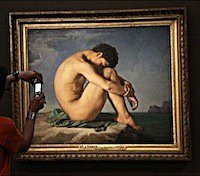
Thu 7 Nov 2013
For Paris art, autumn is the hottest part of the calendar. But this year, a pair of popular shows is turning up that heat. At Musée d’Orsay, Masculine/Masculine: The Nude Man in Art pays tribute to representations of the male figure. Across the Seine, at Musée Jacquemart-André, Desire and Sensuality (Désirs et Volupté) features female beauties of Victorian Britain.
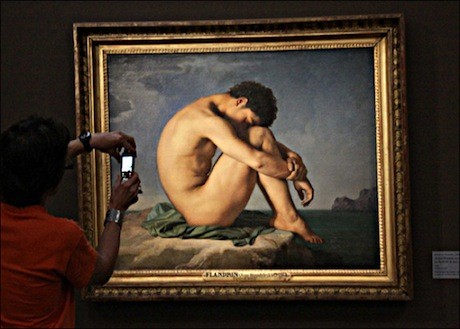
Hippolyte Flandrin, Nude Youth Sitting by the Sea.
Understandably, both are drawing big crowds. But, of the two, it’s the d’Orsay show that is controversial. The brouhaha began on its opening night, when art student Arthur Gillet slipped behind a work and emerged wearing just a beard. As a nude Gillet mingled with the art lovers, many assumed his presence was an in-house stunt. Red-faced officials, however, soon escorted him out.
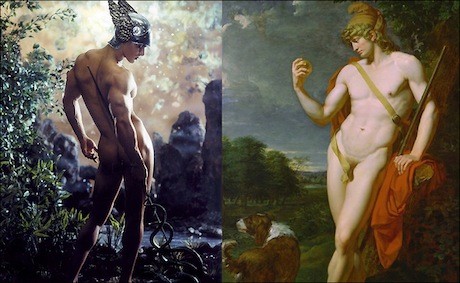
Left, Pierre et Gilles, Mercury; right, Jean-Baptiste Frédéric Desmarais,
The Shepherd Paris.
Gillet pronounced himself “very happy” with the show but he felt its value as gay art was hidden. Yet The Nude Man offers plenty on this front. It’s stuffed with gay icons and favorites such as Robert Mapplethorpe, Jean Cocteau, David Hockney, Paul Cadmus, George Platt Lynes and David LaChapelle. With work in almost every room, flamboyant Pierre and Gilles seem almost like official mascots.
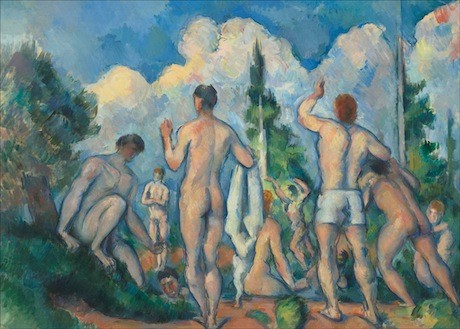
The Bathers, Paul Cézanne. Photo: Musée d’Orsay.
The range of pieces alone makes it worth anyone’s time and there are gorgeous, hunky guys from every era since 1800. The artists range from Jean-Jacques David and Georges de La Trip to moderns like Francis Bacon and Lucian Freud. Also, there is much quirky and unusual work, some from unexpected names such as Egon Schiele or Gustave Moreau.
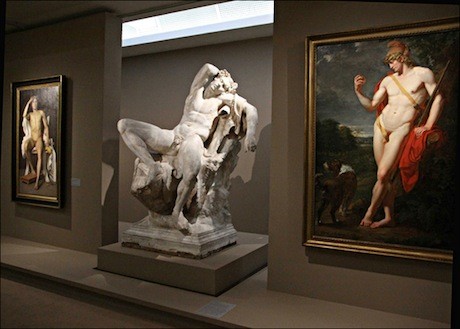
Masculine/Masculine. Photo: Musée d’Orsay.
Things are less confrontational at the bespoke hôtel particulier of wealthy 19th-century banker Edouard André. If you’ve never visited the home of André and his wife Nélie, make this a date. Highfliers of the Second Empire’s high society, this couple collected European painting, decorative arts and antiquities. Here, in room after room of splendidly ornate decor, you can marvel at their sumptuousness of their acquisitions. (A real surprise is their Renaissance paintings, which are actually some of the best in Paris.)

Entry Musée Jacquemart-André. Photo: Musée Jacquemart-André.
Upstairs, in an intimate gallery space, you’ll find Desire and Sensuality in the Victorian Age. The show is perfectly at home in such a lavish setting. England’s Aesthetic Movement created its “cult of beauty” at the moment its French counterparts invented Impressionism. However, the Brits were less concerned with ways of seeing than with their reverence for antiquity and beautiful women. This heady combination made the painters notorious—but their works eventually became popular with collectors. The 50 on show here come from the Pérez Simón holdings, one of Victorian art’s most important private collections.
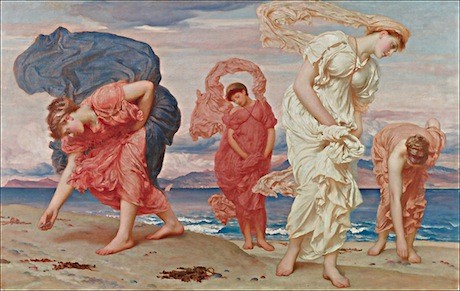
Greek Girls Picking Up Pebbles by the Sea, Ferderick Leighton.
Photo: Musée Jacquemart-André.
The women in them marry feminine wiles and bold sex appeal. Most were painted from life, so these are early images of “supermodels.” Transformed into Greek, Roman or medieval heroines, such ladies traded their daily corsets and crinolines for filmy drapes and robes. Many are “interpreting” the female protagonists of poems, tales and legends. Thus some are lovelorn, while others are evil—or lascivious.
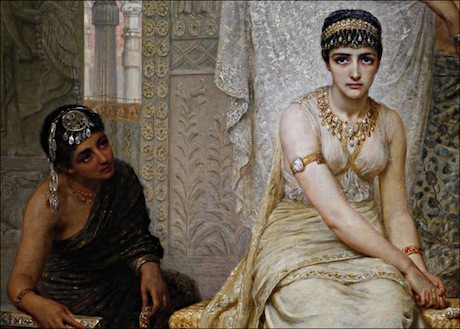
Queen Esther (detail), Edwin L. Long. Photo: Musée
Jacquemart-André.
Most of the paintings are also by Victorian greats, names such as Alma-Tadema, Burne-Jones, Frederick Leighton, Arthur and Talbot Hughes, John Everett Millais and Dante Gabriel Rossetti. Some of the pieces, like The Roses of Heliogabalus or Greek Girls Picking Up Pebbles by the Sea, are now seen as icons of British art. Because the show is grouped by the roles women are playing, you will see classical beauties, muses and models, romantic heroines and steamy femmes fatales.
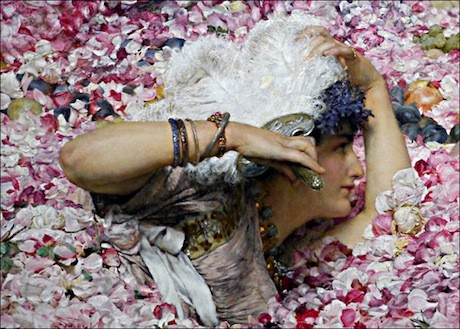
The Roses of Heliogabalus (detail), Lawrence Alma-Tadema.
Photo: Musée Jacquemart-André.
This movement brought the female nude new fame in Britain. Yet the movement eventually squashed its sensuality, siphoning that energy into its decorative impulse.In this superb setting it’s all a guilty, girly pleasure.
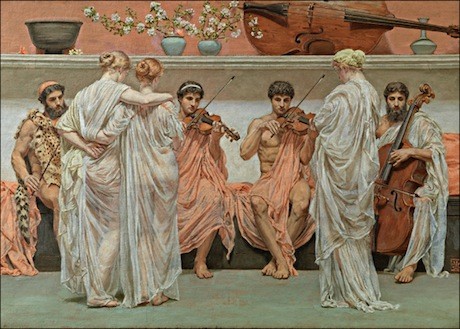
The Quartet, Albert Joseph Moore. Photo: Musée Jacquemart André.
• Both these exhibitions offer excellent brunch-or-lunch options. At the Musée d’Orsay, try the upstairs café (designed by Fernando and Humberty Campana). At Musée Jacquemart-André, the charming tearoom-café is a classic local spot.
Did you know there is a treasure trove of content like this in our archives? Register as a friend of the Girls’ Guide to Paris website if you haven’t already, and you’ll have access to all our recommendations and insider info!
Info/Related Links
Masculine/Masculine: The Nude Man in Art runs through January 2, 2014
Desire and Sensuality in the Victorian Age (Désirs et Volupté) runs through January 20, 2014